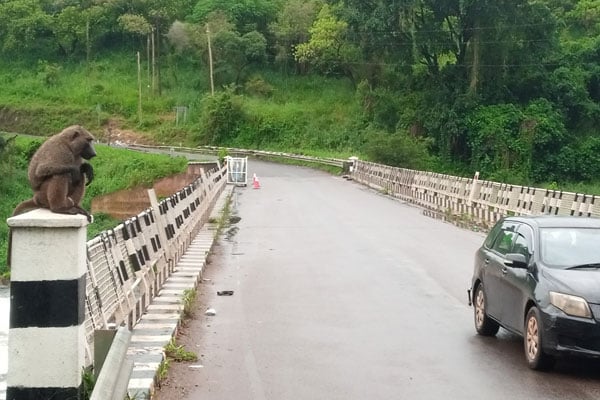Flaws on Karuma Bridge first detected 15 years ago

Karuma Bridge that links to West Nile. Photo/Warom Felix.
What you need to know:
- UNRA on Friday announced that the overpass would close to lorries, trailers and buses to allow planned three-month emergency rehabilitation after its experts found “some elements of the structure (the concrete deck) have deteriorated, particularly on the Kampala approach lane.
The structural failings that have prompted the government to close Karuma Bridge on River Nile to heavy-duty traffic effective today, were first detected 15 years ago, a senior official has said.
Mr Lawrence Pario, the head of Bridges and Structures at Uganda National Roads Authority (UNRA), said as a result remedial works on the overpass were done in 2012, allowing the key infrastructure to serve for more than a decade.
UNRA on Friday announced that the overpass would close to lorries, trailers and buses to allow planned three-month emergency rehabilitation after its experts found “some elements of the structure (the concrete deck) have deteriorated, particularly on the Kampala approach lane.
“The continued exposure of the bridge to the ever-increasing heavy traffic is likely to accelerate its deterioration and serviceability …,” the public notice read in part.
Sources close to the assessment told this publication that the bridge’s structural steel have rusted and the concrete as well as the bearings have deteriorated.
Built in 1963, the infrastructure was designed to last for 50 years, which lapsed in 2013, with its additional years of use after this period called “service life”.
“It (the bridge) now requires major rehabilitation to serve in the service life,” Mr Pario said.
Following worsening of the defects, UNRA’s second remedial works – the first in 2012 – is intended to strengthen the deck structure, which could enable the bridge work for another 15 or so years.
The alternative to strengthen the foundation to give the bridge a longer service life has been hampered by a discovery during inspection that it submerged.
This publication understands that there are concerns among technocrats that strengthening the bridge will make it structurally strong, but functionally obsolete due to vertical and horizontal misalignment between the bridge and approach roads.
Officials fear that road curves to the bridge, long blamed for some of the accidents, and defects at road-bridge intersections could create blackspots where vehicles could easily lose balance and plunge into River Nile. These fears notwithstanding, UNRA’s Pario said there is light at the end of the tunnel progress on plans to build a cable-stayed bridge downstream from the current Karuma Bridge.
“The alternative bridge is under design,” he told this publication yesterday. “Preliminary design, geo-technical investigations and survey has been completed”.
Ugandan bureaucrats have been involved in protracted negotiations with Japanese counterparts over financing of the planned cable-stayed bridge, designed to be similar to the New Source of The Nile overpass in Jinja.
The initial cost was estimated at Shs300b and Mr Uchiyama Takayuki, the then chief representative of Japan International Cooperation Agency (JICA) in Uganda, told this publication in July 2021 that Kampala wanted Tokyo to bankroll from grants rather than loans.
Another area of bargain was the proposal by Uganda to incorporate cultural artifacts in the design of the bridge to suit tourism appeal due to its location on the edge of Murchison Falls National Park, something that Mr Takayuki said increased the costs. It’s unclear if a final deal has been struck on the funding and when the expected works on the new bridge would commence.



